Showing 13–24 of 50 results
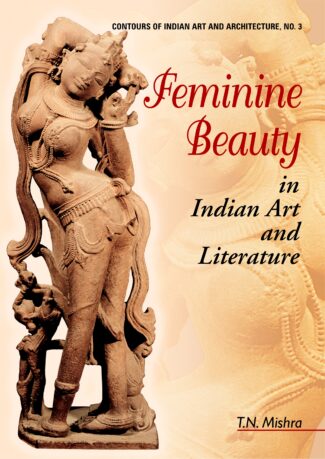
The book is a study of Indian art, iconography and sculptures representing devotion, love, human moods and sentiments, especially in its depiction of female sculptures on ancient temples covering famous temple of Khajuraho, Bhubaneswar, Pura, Konark, Nagda, Belur, Halebid, Ajanta and Ambarnath of various dynasties.
The book is a study of Indian art representing devotion, love, human moods and sentiments, especially in its depiction of female sculptures on ancient temples. It begins with a discussion on Indian art as synthesis of the sublime in nature and the human physical form that conveys the sublime. With numerous illustrations of art, iconography and sculptures from different regions of India, it examines a breath-taking variety of female forms of divinities, celestial nymphs and others symbolising youth, beauty and sensuousness. Referring to features of art of different periods under various dynasties, like the Gupta art, it focuses on representation of female forms and couples particularly erotic realisations in art, i.e. nude figures and mithuna scenes. It studies the figures carved on various materials and in different styles, highlighting the salient features of each one of them. The influence of religious traditions, as Tantrism, on the art depicted is painstakingly traced. Giving examples from famous temples of Khajuràho, Bhubaneswar, Purã, Koõàrk, Nàgdà, Belår, Haëebid, Ajantà and Ambarnàth, the work examines expressions, postures and attitudes of figures to show that they reflect physical bliss, emotional and psychological expressions, and the spiritual state. The book will be useful for scholars of art and art historians in particular who are keen on understanding the aesthetics of Indian art.
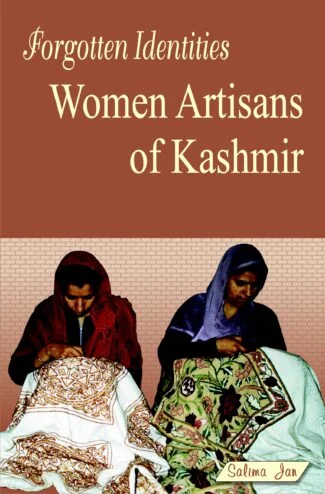
The work examines adoption of handicrafts as an occupation by artisan women of Kashmir to contribute significantly to their families and the society in spite of problems of earning livelihood in a patriarchal society. Based on empirical data, it deals with their socio-economic background, the way they cope with their duties at home and those of their profession, and their aspirations and rights.
The contribution of women to sustenance and survival of cultures and civilization, as such, has assumed new proportions in the last century or so, with women engaging themselves in a range of activities for livelihood in urban centres. Their contributions have, however, largely gone unacknowledged due to various factors. This study attempts to address this aspect by focusing on the role of urban women in the handicrafts sector in Kashmir. Dr. Salima Jan examines how the artisan women, in spite of difficulties of earning livelihood in a patriachal society, have adopted handicraft as a household occupation and are contributing immensely to family and society. Based on empirical data obtained from survey and presenting case studies, the work examines the socio-economic and educational background of artisan women before delving into aspects, such as, the nature of work done by them, their wages in different handicrafts, their control over these and the conditions under which the women have opted for the role. It analyses the manner in which the women cope with their dual roles involvement in household chores as well as employment in handicrafts and deals with their individual aspirations and rights in this context i.e., their say in decision-making in families and their perceptions of job satisfaction and changing role of women. This research effort would be useful to researchers and scholars engaged in a range of sociological disciplines but, particularly, associated with sociology of work and gender studies.

This anthology raises, discusses and debates issues, aesthetics and techniques connected with the Indian theatre in the backdrop of political, social and moral values of women in theatre. Unearthing the dynamics of gender, it fills up the vacuum of scholarly literature on the role of women in theatre.
This book explores the presence and contribution of women to the recorded history of Indian theatre. It provides a platform to raise, discuss and debate issues, aesthetics and techniques connected with the Indian theatre in the backdrop of political, social and moral values of women in theatre. An attempt to fill up the vacuum of scholarly literature on the role of women in theatre, this book expects to create enough academic value and interest. Its content unearths the dynamics of gender in the history of theatre. It extensively deals with the theoretical and practical aspects of women’s theatre.
This anthology also addresses the various social issues associated with gender inequality through essays, play-texts and interviews. In a similar vein, it delves deep into the relationship among theatre, public/private sphere and gender. This work purports to address a variety of needs of feminist researchers and laymen who are not conversant with the contribution of women to theatre and its obvious political and transformative intent.
This collection also intends to see how the theatrical space could unsettle the gendered binaries regulating women’s presence in public space, and proposes to see why and how relevant feminist politics is in re-imagining a vibrant and inclusive concept of gender fairness and justice in contemporary India. It extends high referral value for researchers, students and even laymen with interest in the role of women in theatre.

The book explores the ancient Indian art from the perspective of gender and delves into the development of engendered representation in art, with the emergence of aesthetic and sexual archetypes and stereotypes of women: goddesses, mothers, wives, nuns, semi-divine yakshis, ogresses and others by giving insights into the intention, agency and patronage patterns in early Indian art.
The book is an exploration of ancient Indian art from the perspective of gender. It focuses on the period from 181 bce to ce 320 a period of great turmoil in the politico-economic, socio-cultural and religious spheres that gave rise to contesting ideologies and gender complexities in ancient India. It delves into the development of engendered representation in art, with the emergence of aesthetic and sexual archetypes and stereotypes of women: goddesses, mothers, wives, nuns, semi-divine yaksis, ogresses and others. It examines the nature of the stereotypes and archetypes that were constructed on the basis of gender roles rather than on sex and how these were reflected by various attributes of the representations nudity or its absence, ornamentation, gestures, direction of gaze and context. It gives interesting insights into the intention, agency and patronage patterns in early Indian art.
The volume with its scholarly approach, providing fresh insights into early Indian art, will prove useful to scholars, students and researchers of Indian art and history alongwith the cognoscenti.

The book examines the joint family system in India — its roots in Vedic times, its evolution and relevance and practicality in the present times, the changing social norms, value systems and human behaviour over time, the position and status of the aged with the decline of the system, etc.
The joint family system has ancient roots in India, being traceable to the Vedic times when four generations lived together. The tradition helped in maintaining strong bonds of kinship and keeping alive customs and traditions of the past. This book seeks to examine the joint family system in India: its evolution and relevance and practicality in the present times. It deals with the changing social norms, value systems and human behaviour over time and views the role of religion in promoting human values and fellowship which are an essential ingredient of joint family norms. With case studies, it explores aspects of the Indian family like its cultural and ritualistic traditions, the importance and role of the woman as the backbone of the Vedic society, the position and status of the aged with the decline of the joint family system, and the importance of the joint family as a vehicle for accumulating wealth — both material and in terms of serving and benefiting all. The volume will prove a useful contribution for scholars and students in the field of Indian social and cultural studies.
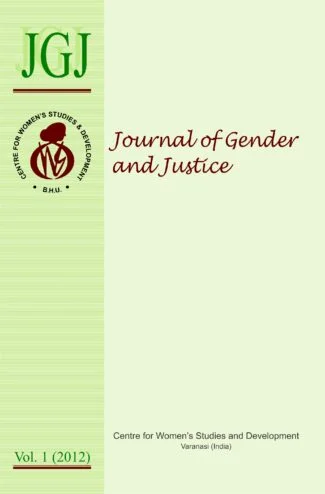
The Indian society has yet to appreciate the strength of its women populace and treat them as quintessentials in nation-building. The objectives of this journal from Banaras Hindu University’s Centre for Women’s Studies and Development, are both academic and social. It expects to change the present attitude and values in society regarding women’s roles and rights to one of equal participation in all social, economic and political processes.
India has been labelled as a land of gender inequality and a challenging place for a woman to live. For centuries, social reformers were fighting for women rights and thus taking the country out of this social stigma and injustice, and they invested a lot on educating and empowering women. But they have met with only partial success. The numerous cases of female infanticides, sex-selective abortions and atrocities on women endorse this fact. We have yet to undergo a sea change in our attitude towards the dignity, education, employment and empowerment of women. The society has to appreciate their strength and treat them as quintessentials in nation-building.
There is no society in the world in which women do not experience some gender inequality, be it in political, economic, social, or legal fronts. But in many countries, the gender inequality is really acute. Therefore these important issues Þ the invisibility, dstortion and marginalization of gender as a category of analysis in mainstream disciplines and their canonozation Þ need serious deliberations.
The objectives of Journal of Gender and Justice are both academic and social. It expects to change the present attitude and values in society regarding women’s roles and rights to one of equal participation in all social, economic and political processes. It is designed to help in bringing a culture shift in attitudes and values in society regarding women’s roles and rights. This ßannualû journal from the stable of Banares Hindu University’s Centre for Women’s Studies and Development, Varanasi, will also target at fulfilling a special responsibility to teachers, who are aware of the need of non-sexiest education, who would pick up the challenge to promote value of equality, including the gender equality.
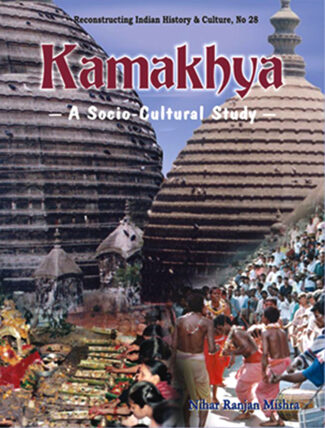
This is a comprehensive work on the Kamakhya temple complex in Assam: the complex processes of the deitys Sanskritization and the temples role in integrating the people of this region with the mainland. It makes a detailed study of the temple rituals, festivals and personnel and socio-cultural life and includes an account on spread of Saktism in the region.
This is a comprehensive work on the Kamakhya temple complex in Assam: the complex processes of the deity’s sanskritization and the temple’s role in integrating the people of this region with the mainland. Incorporating details from interviews with temple priests and other temple staff and from literary materials on the temple, it deals with the socio-cultural life at the temple complex with respect to rites of passage relating to marriage, birth and death, arts and crafts, food, dress and folk medicine. With illustrations of the temple structure and sculptures and religious and cultural activities, the text makes a detailed study of the temple rituals, festivals and personnel their kinds and functions and changes in the body of the temple staff with time. Importantly, it provides a background to the study by examining the spread of shaktism over different periods in the Eastern Indian region and specifically Assam.
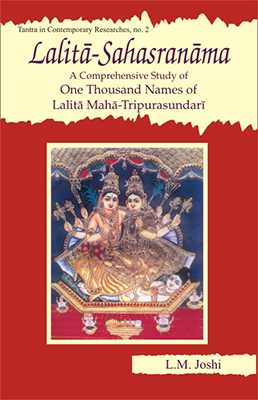
It analyses, for the first time, each of Sri Lalitas thousand names, through themes like the Goddesss anthropomorphic forms, abodes and ritualistic worship. It underscores the importance of Lalita-Sahasranama in philosophy, tantra, yoga, sahasranama literature, etc.
In the Hindu sacred literature, Sahasra-namas: the texts embodying literally “the Thousand Names” of a deity, constitute a genre in their own right. And Lalita-Sahasranama (LS) is a veritable classic in the traditional writings of the kind — a classic widely acknowledged for its lucidity, clarity and poetic excellence. A medieval work of unknown authorship eulogising Shakti: the Mother Goddess, this Sahasranama is not just a masterly exposition of Shri Lalita’s cult, but also sets out the deity’s diverse epithets — like, for instance, Kundalini, Nirguna, Saguna, Parashakti or Brahman — which continue to evoke reverence as mantras with ‘mystic powers’. Also included among these names are the goddess’s other panegyric descriptions that have come to have profound, esoteric connotations in tantric practices — epitomizing, thus, the fundamental tenets of tantrashastra. Here is a brilliant critical edition of Lalita-Sahasranama meticulously analysing, for the first time, each of Shri Lalita’s thousand names — by a variety of themes, like the Goddess’s conceptual representations, anthropomorphic forms, disposition, abodes, kinships/consorts, ritualistic worship, and her supremacy in pantheonic hierarchy. Also explaining and interpreting anew these thousand names on the basis of time-honoured commentaries, Dr. Joshi under-scores the high importance of Lalita-Sahasranama in philosophy, tantra, yoga, sahasranama literature, and rituals of various descriptions. The book includes the original Sanskrit text of LS, its romanised transliteration and, additionally, an Appendix listing Sri Lalita’s thousand names in the A-Z sequence.

It analyses, for the first time, each of Sri Lalitas thousand names, through themes like the Goddesss anthropomorphic forms, abodes and ritualistic worship. It underscores the importance of Lalita-Sahasranama in philosophy, tantra, yoga, sahasranama literature, etc.
In the Hindu sacred literature, Sahasra-namas: the texts embodying literally “the Thousand Names” of a deity, constitute a genre in their own right. And Lalita-Sahasranama (LS) is a veritable classic in the traditional writings of the kind — a classic widely acknowledged for its lucidity, clarity and poetic excellence. A medieval work of unknown authorship eulogising Shakti: the Mother Goddess, this Sahasranama is not just a masterly exposition of Shri Lalita’s cult, but also sets out the deity’s diverse epithets — like, for instance, Kundalini, Nirguna, Saguna, Parashakti or Brahman — which continue to evoke reverence as mantras with ‘mystic powers’. Also included among these names are the goddess’s other panegyric descriptions that have come to have profound, esoteric connotations in tantric practices — epitomizing, thus, the fundamental tenets of tantrashastra. Here is a brilliant critical edition of Lalita-Sahasranama meticulously analysing, for the first time, each of Shri Lalita’s thousand names — by a variety of themes, like the Goddess’s conceptual representations, anthropomorphic forms, disposition, abodes, kinships/consorts, ritualistic worship, and her supremacy in pantheonic hierarchy. Also explaining and interpreting anew these thousand names on the basis of time-honoured commentaries, Dr. Joshi under-scores the high importance of Lalita-Sahasranama in philosophy, tantra, yoga, sahasranama literature, and rituals of various descriptions. The book includes the original Sanskrit text of LS, its romanised transliteration and, additionally, an Appendix listing Sri Lalita’s thousand names in the A-Z sequence.
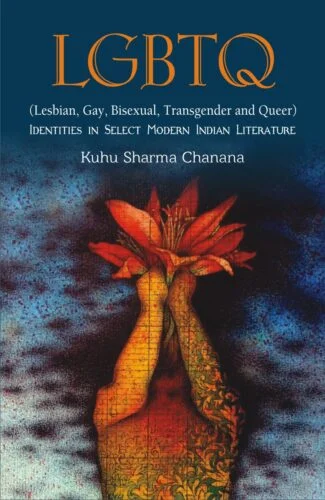
This book aims at developing an exclusive literary framework to analyse the Indian queer literary works. It helps in excavating the convoluted layers and subversive potential of queer identities, and in studying the efforts made by the Indian writers to homosexualize various so-called normative spaces.
The invisibility accorded to queer literary works in India has a systematic sinister agenda of silencing. Such a hidden target can be countered only by cataloguing the still unexplored queer texts in various Indian languages and by developing unique critical tools to analyse these texts in a such a manner that helps in excavating the convoluted layers and subversive potential of queer identities.
This book aims at developing an exclusive literary framework to analyse the Indian queer literary works. In all, there are seven chapters which deal with the themes of plurality of lesbian existence, ambivalent adaptation techniques adopted by the writers to grant visibility to subaltern sexualities, overlapping of class and homosexuality, the development of exclusive queer aesthetics by inversion of accepted mode of literary language, imagery and techniques, the doubly marginalized identity of lesbian diaspora and the specific rift between lesbianism, feminism and queer activism in Indian context as presented in literary studies.
It also deals with the issues of biphobia, violence on hijra identity (perhaps one of the most marginalized identity in LGBTQ movement), the depiction of symbiotic relationship between space, sexual identity and sexual citizenship in Indian literary texts and the efforts made by the writers to homosexualize various so-called normative spaces.
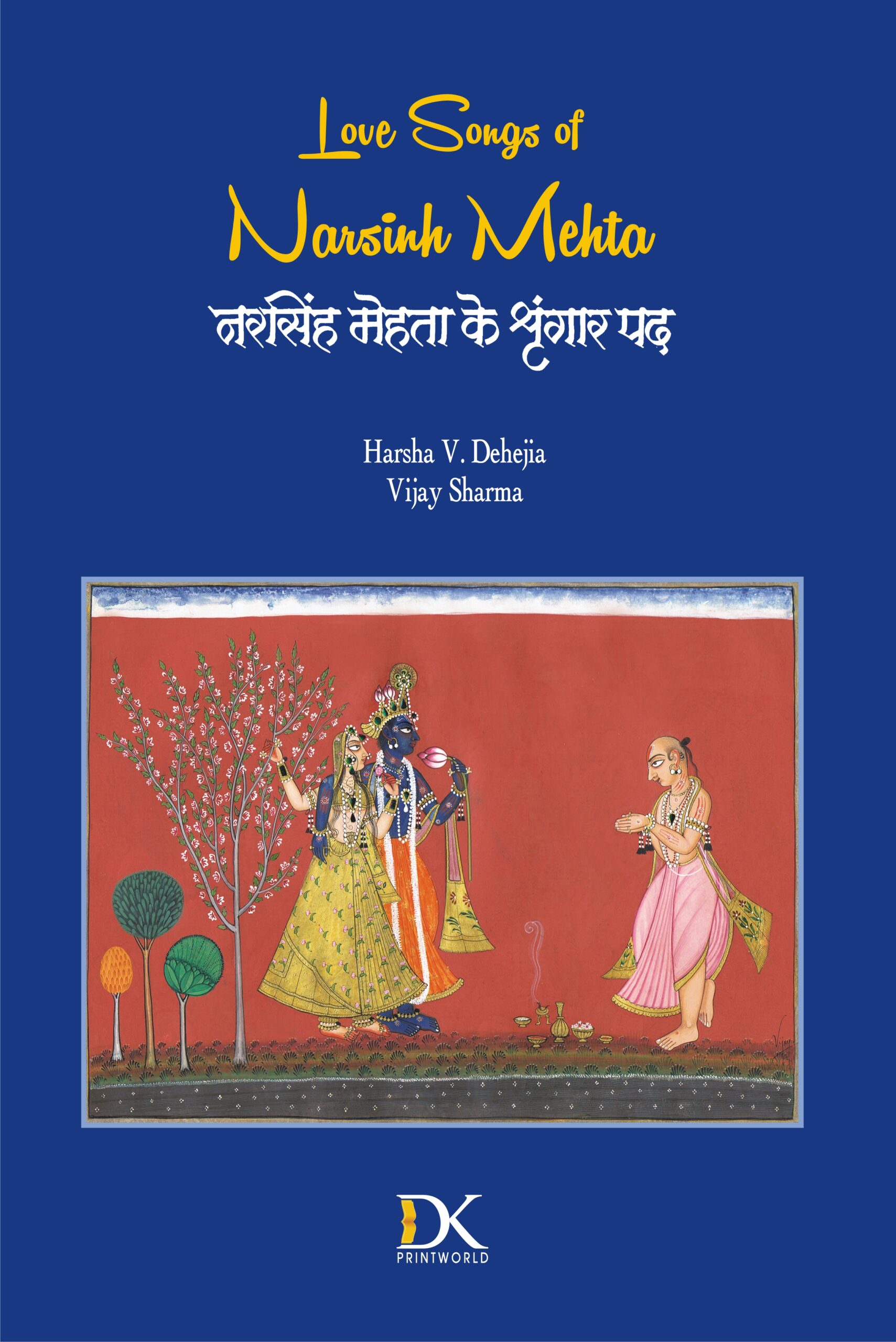
Love Songs of Narsinh Mehta is a commentary on the love songs of Narsinh, adi-kavi of Gujarat. Narsinh sings the glory of Krishna in total devotion as if Krishna is sitting in front of him. For him, Krishna is divine and human, both at the same time. Being Krishnas love, he brings in all emotions and cues of devotional love to his poetry.
Love Songs of Narsinh Mehta is a commentary on Narsinh Mehtas love songs. Narsinh (1408-65), a Vaishnava bhakti poet of medieval India, is considered as the adi-kavi of Gujarat. He is also regarded as a shringara kavi, a poet of romance. The quintessence of his bhakti is prem and his prem has inherent bhakti, and therefore his poetry is regarded as shringara bhakti kavya. Essentially shringara is the romantic celebration of the other, and when Narsinh’s other is none other than Krishna, his shringara kavya becomes Krishna bhakti, where Krishna is both divine and human, at the same time. Singing for Krishna, Narsinh celebrates his swami through amorous verses and divine surrender like Jayadeva.
He sat in a temple and relentlessly sang for his Lord, living through absolute poverty. Nothing made him more jovial than singing the glory of his Krishna. The only man for Narsinh is Krishna, and for the latter Narsinh is a woman at heart. Narsinh, through his songs, brings in the cue of all romantic feelings and moments, recreates the idyllic Vrindavana in ones mind, and he returns that Vrindavana a Vaikuntha with the footfalls of his Krishna.
Through this commentary, the author Harsha V. Dehejia introduces one to the fullness of Narsinhs poems, thereby making one known to Narsinh in and out.
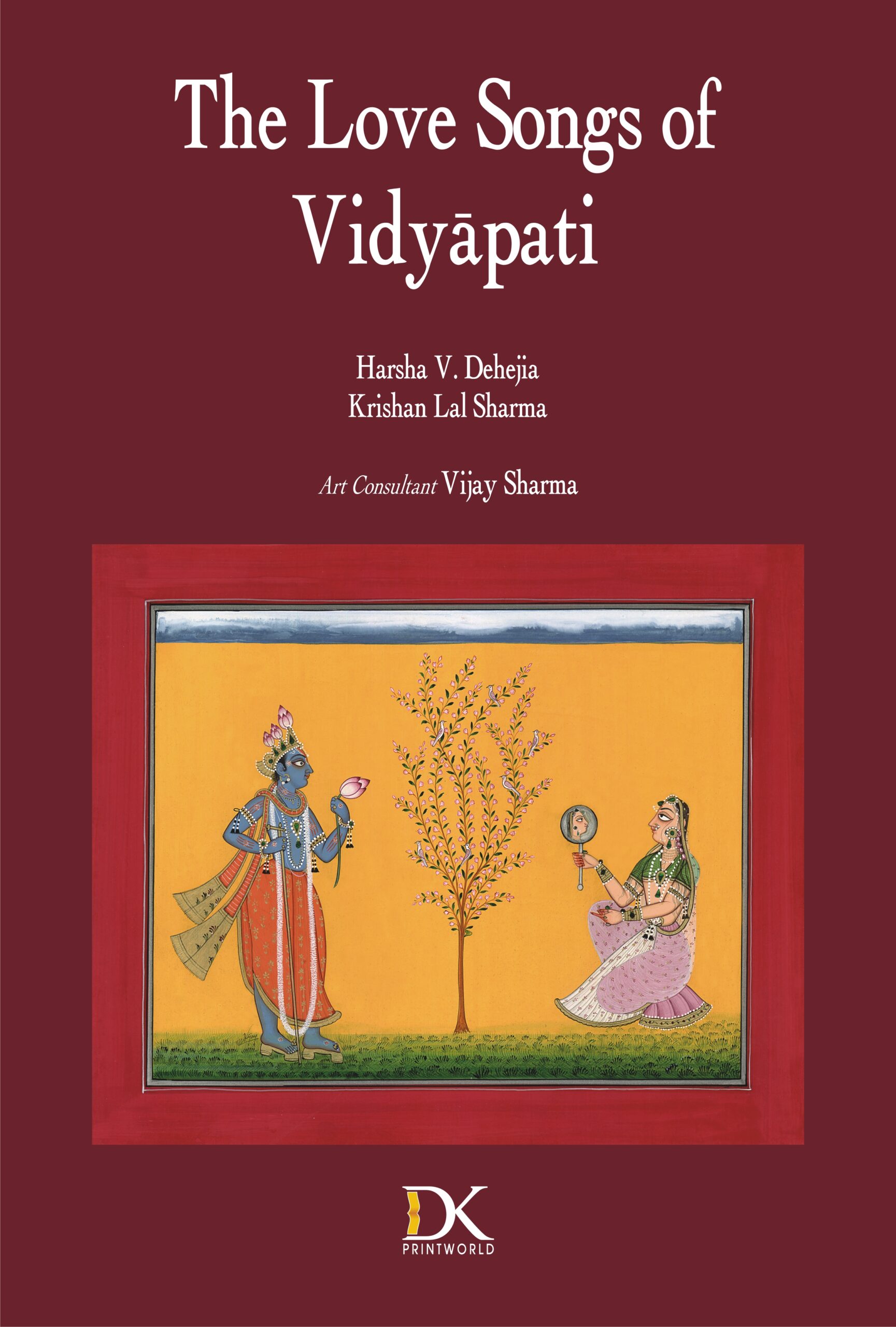
This portfolio, based on the ten Maithili love songs of Vidyapati, presents lovely paintings on the varied love moods of Radha: her sensuous charm, innocence, longing for Krishna, surrender to love, etc.
Vidyapati (c. 13521448), called second Jayadeva in his lifetime, is immersed, charged and inspired by the love of Radha and Krishna. He wrote emotionally-intensive love songs in Maithili, for the queens of Shiva Simha, his patron, and the common folk. Though drawn inspiration from Jayadeva, more than him, Vidyapati presents in his poetry a rare, tender and sensitive understanding of Radhas psyche. In his love songs Radha, not Krishna, is in the centre stage and through his nayika Vidyapati is reaching out to each and every woman in Mithila.
Vidyapati presents his songs from a womans heart, and describes his nayikas slowly awakening youth, her sensuous beauty, her coyish charm, her naïve innocence, her surrender to love and her anguish on being neglected. She is invariably sensual, spiritual, physical and emotional. Though she did not inspire painters of the time, she ruled the hearts of the people of Mithila. Vidyapatis love songs are written in honeyed words and are sung with mellifluous notes in homes, fields, chowks and havelis, across eastern India. And thus he still rules their heart.
This portfolio, based on the ten love songs of Vidyapati, presents lovely paintings on the varied love moods of Radha, the love queen. In doing so, different artists have displayed their dexterity in Jaipur, Caurapancashika, late Mughal, Manaku, Kishangarh, Jain, Kangra and Basohli styles.